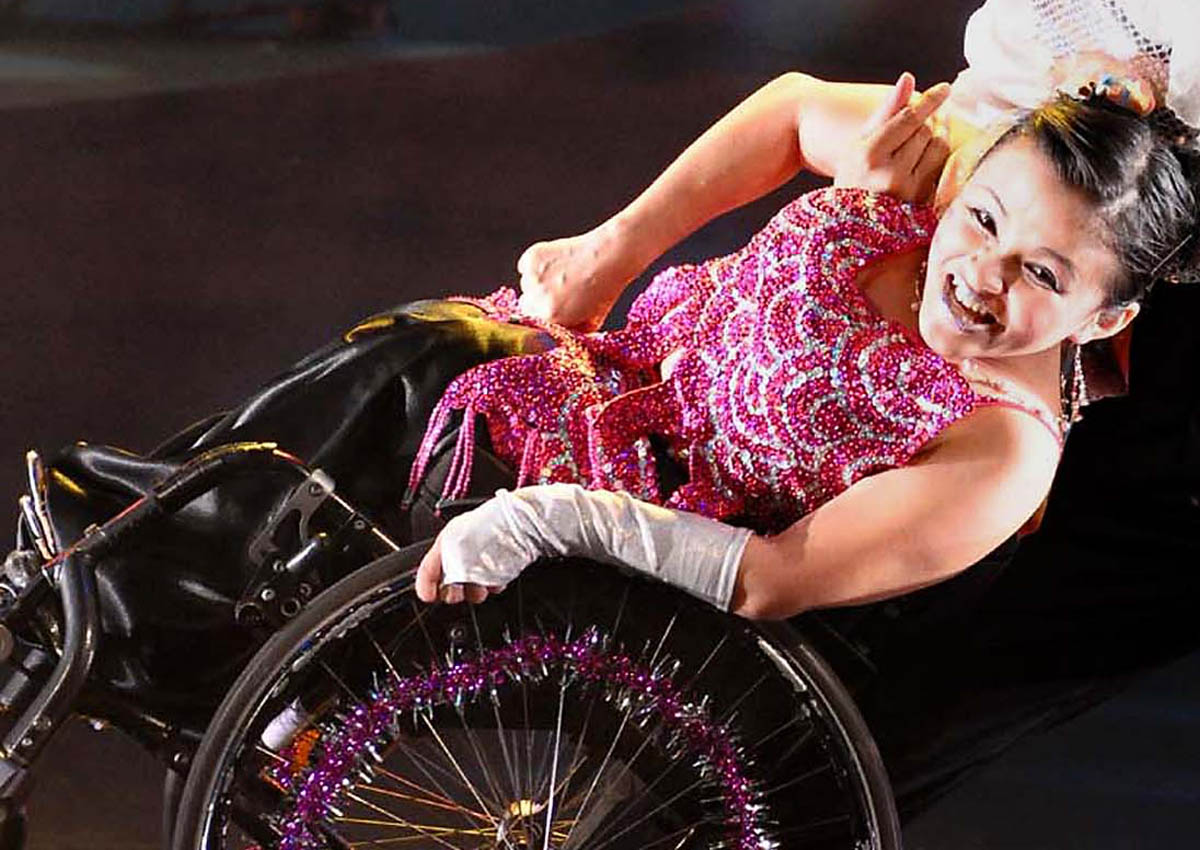When wheelchair-bound Ms Julie Chong dances on stage, she has a specific aim.
Through her turns and swivels, the 41-year-old IT professional wants to make the wheelchair she’s sitting on disappear.
Ms Chong tells The New Paper on Sunday: “The wheelchair has to become a part of you, so that when you dance, it’s not a glaring thing.
“With dance, the audience sees the person as more than just a person in a chair.”
Despite suffering from brittle bone disease, in which a person has fragile bones that break easily, Ms Chong has been making a name for herself as a dancer.
She has performed at ticketed events at the Esplanade and Marina Bay Sands and even danced with local celebrities.
A workshop she attended in 2001 sparked her interest in wheelchair dancing, but Ms Chong started dancing regularly only three years later.
“What appealed to me most was that one can negate the view of looking clumsy in a wheelchair. It’s possible to look graceful too,” she says.
Ms Chong focuses on Latin-ballroom dancing, where she dances with a partner who is standing up.
Coordination between the two partners involves a lot of communication, and Ms Chong says that can be a challenge.
“They have to be mindful of their own footwork and coordinate their steps for us,” says Ms Chong.
“Not only do we have to know how to control our chairs, dancing with a standing partner requires an understanding and trust with each other.”
Her best dancing partner is also her partner in life.
Ms Chong’s able-bodied husband, teacher Andy Ang, 46, says he enjoys performing with her because it is something that always “makes us happy”.
Says Mr Ang: “It’s different because the person in the wheelchair looks to the one standing to take the lead.
“But holding hands and doing the steps together, it’s all about that strength and connection.”
When asked about the achievements of para-swimmers Yip Pin Xiu, Theresa Goh and the other Team Singapore paralympians who made the rounds yesterday (See Page 3), Ms Chong speaks excitedly about how proud she is.
“What everyone sees is the result, but some of us in the community have known them since they were young,” she says.
Grow
“Seeing them grow into their sport and achieve so much makes me happy and proud.
“They might not be physically strong but mentally, they are giants.”
Wheelchair dancing is also a paralympic sport. The first world championship took place in Japan in 1998 – the year the sport came under the management of the International Paralympic Committee.
When asked if she dreams of being a paralympian, Ms Chong laughs and says she still wants to train and be good enough to join competition.
What she does hope for is a more inclusive community for people with special needs.
Ms Chong says: “There’s a lot being done for us, but there can always be more.
“An underlying support system must be in place to help disabled people in doing whatever they want to do.
“If people see the value in us, we can be (more than) paralympians. There can be people like us who can be world-renowned scientists, writers and painters too.”

This article was first published on September 25, 2016.
Get The New Paper for more stories.






